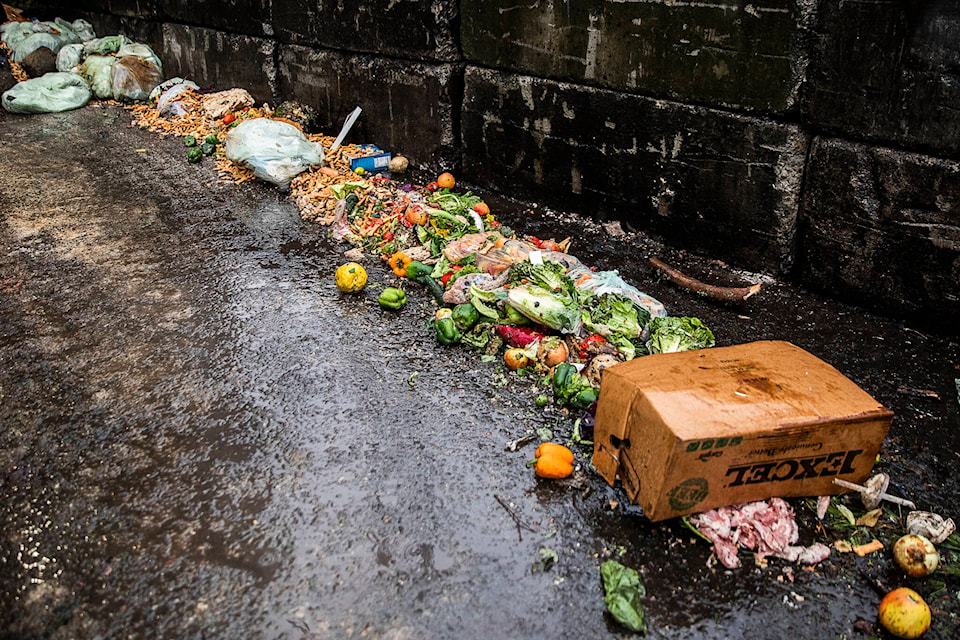By Kaitlin Bloemberg
Special to Black Press
When thinking about December, a memory that comes to mind is the snow crunching under my boots at the driveway of my grandma’s home.
I can smell her pea soup in the kitchen and see the small towers of wrapped presents under the tree. December looks different for everyone - for many, the month is full of work parties, various holidays, shared meals, shopping, decorating, and gift-giving. While these practices can facilitate connection, the unintended consequences often include massive increases in waste. I am grateful for the afternoons spent in my grandma’s kitchen and I am saddened about the effects of the event that I didn’t grasp - the garbage bags of wrapping paper, the wasted containers of food, and the old toys disposed of for new ones.
So how does this waste happen?
During the holidays, the average Canadian family creates 25 to 45 per cent more garbage. A majority of this is food waste. Wasted food often ends up in landfills, where it decomposes and produces harmful greenhouse gases (GHG) like methane, contributing further to climate change. In Canada, over 50 million tonnes of food is wasted every year - 60 per cent can be avoided with better planning and increased awareness. Food waste is so significant that if it was a country, it would be the third-largest carbon dioxide-emitting country in the world, after the US and China! The over-purchasing and wasting of food also strain resources as the production, transportation, and disposal of food require vast amounts of water, energy, and land.
Beyond food waste, holiday festivities often involve single-use decorations and party materials such as platters, plates, cups, utensils. Surges in online shopping result in an overwhelm of cardboard boxes, bubble wrap, and plastic packaging, much of which is single-use and/or difficult to recycle. In addition to packaging, gift wrap is a major contributor. In the US alone, the holiday season is estimated to create around 4.6 million pounds of wrapping paper, with about 2.3 million pounds ending up in landfills. This is enough wrapping paper to circle the earth nine times.
The relationship between (GHG) emissions and landfills is significant - 20 per cent of global human-driven methane emissions are a result of the waste sector. In addition to more responsible waste-management practices, less stuff needs to be wasted. Waste sites contribute to air pollution, water contamination, soil contamination, disease transmission, and the loss of biodiversity. Excessive human consumption affects both us and future generations in numerous ways, mentally and physically. The World Health Organization recognizes biodiversity loss and climate change as interconnected, with substantial impacts to human health. Consumer-focused decisions, which are more amplified during the holidays, come at a price.
That being said, traditions can feel like a core part of the holiday season. So how can we honour what feels important while adopting more sustainable holiday practices? To manage food waste, meals can be planned thoughtfully, purchasing only what’s necessary, and donating excess food. Gift-giving can involve eco-friendly wrapping, giving experiences rather than objects, and recycling or reusing packaging materials. Mindful shopping can also be effective. This might involve setting limitations and focusing on necessity rather than impulse. When purchases are necessary, consider buying durable products, purchasing second hand, and supporting sustainable brands.
Celebration and connection are key parts of what it is to be human, and as conscious beings, we must acknowledge the cost of our actions. Our consumption and waste impact the health of humans and the planet. December is a chance to reimagine, as we continue to participate in ritual while consuming more responsibly.
Kaitlin Bloemberg is a member of the Canadian Association of Nurses for the Environment https://cane-aiie.ca
